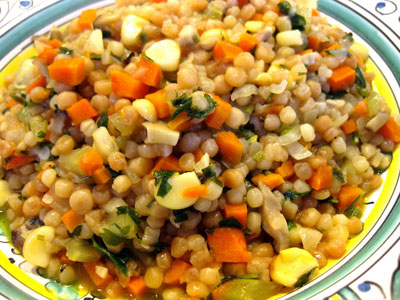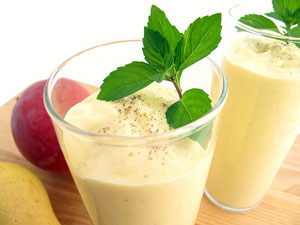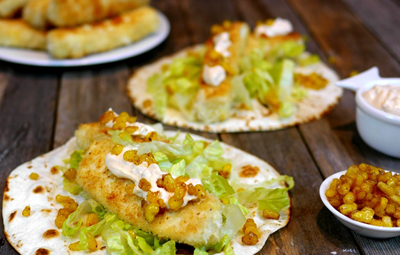 Chicken Paprikash, one of Hungary’s signature comfort food dishes, is made with the country’s quintessential ingredient - paprika. Perhaps not as famous as the better known Goulash, it is still found on nearly every menu and is a common recipe in most Hungarian homes. I was in Budapest for the first time a few months ago and loved the city, in fact I’m already planning a return trip.
Chicken Paprikash, one of Hungary’s signature comfort food dishes, is made with the country’s quintessential ingredient - paprika. Perhaps not as famous as the better known Goulash, it is still found on nearly every menu and is a common recipe in most Hungarian homes. I was in Budapest for the first time a few months ago and loved the city, in fact I’m already planning a return trip.
Condé Nast Traveler recently published its annual Readers' Choice Awards and the "30 best cities in the world" list, which named Budapest, Hungary, as the second-best city in the world, right below Florence, Italy. It’s no wonder – a thriving vibrant city, rich in culture, a complex history, world renowned spas, and gorgeous architecture – there’s something for everyone in Budapest. Although it helped to have some friends who live in Hungary, I found the city easy to navigate and fun to explore, and I recommend it to anyone looking for a new travel destination.
After researching a few hotels, I opted for the relatively new Aria Hotel Budapest, a stately 19th century bank building transformed into a luxurious boutique hotel centrally located just down from St. Stephen's Basilica. After settling into my spacious and modern music themed “Leonard Bernstein” room, I headed downstairs to Aria’s Satchmo's Bar (which offers both lunch and dinner served either inside or outside on the terrace) to meet with Balázs Váradi-Szabó and learn about the hotel’s cuisine. Balázs, their incredibly knowledgeable food and beverage manager, explained that the current menu in many ways reflects the hotel itself – “classic Hungarian with a modern twist.” Patrons hoping to sample the famed Paprikash can expect a deconstructed version which can be found on their inspired menu as a warm appetizer - the “Hortobágyi éclair” features tender paprika chicken wrapped in a soft crepe-like pastry.
 I am a control freak.
I am a control freak.

 Chicken Paprikash, one of Hungary’s signature comfort food dishes, is made with the country’s quintessential ingredient - paprika. Perhaps not as famous as the better known Goulash, it is still found on nearly every menu and is a common recipe in most Hungarian homes. I was in Budapest for the first time a few months ago and loved the city, in fact I’m already planning a return trip.
Chicken Paprikash, one of Hungary’s signature comfort food dishes, is made with the country’s quintessential ingredient - paprika. Perhaps not as famous as the better known Goulash, it is still found on nearly every menu and is a common recipe in most Hungarian homes. I was in Budapest for the first time a few months ago and loved the city, in fact I’m already planning a return trip. Traditional couscous has a home in the flavorful cuisines of North Africa. Tunisia, Morocco, Egypt, and Libya have perfected a small grained, steamed couscous that contrasts well with their spicy sauces. Preparing authentic couscous requires a steamer and considerable patience. The result, while delicious, is too time-consuming for most people.
Traditional couscous has a home in the flavorful cuisines of North Africa. Tunisia, Morocco, Egypt, and Libya have perfected a small grained, steamed couscous that contrasts well with their spicy sauces. Preparing authentic couscous requires a steamer and considerable patience. The result, while delicious, is too time-consuming for most people. This hot weather has had me craving countless summery foods and refreshing drinks, more than I can count. To keep cool I've been snacking on fruit and drinking iced teas and smoothies. Recently I was reminded of the popularity of mangoes while walking in the city on an extremely hot day. Everywhere I noticed vendors selling mangoes carved into flowers. I couldn't help but feel transported to South America where that custom is prevalent. Mangoes are a celebrated fruit throughout the world with hundreds of varieties grown in tropical climates, particularly in India from where they originate. Mangoes can be enjoyed as desserts and snacks or in savory dishes like Indian chutneys and pickles. But one of the most popular ways to enjoy a mango is with a lassi, a traditional Indian yogurt smoothie.
This hot weather has had me craving countless summery foods and refreshing drinks, more than I can count. To keep cool I've been snacking on fruit and drinking iced teas and smoothies. Recently I was reminded of the popularity of mangoes while walking in the city on an extremely hot day. Everywhere I noticed vendors selling mangoes carved into flowers. I couldn't help but feel transported to South America where that custom is prevalent. Mangoes are a celebrated fruit throughout the world with hundreds of varieties grown in tropical climates, particularly in India from where they originate. Mangoes can be enjoyed as desserts and snacks or in savory dishes like Indian chutneys and pickles. But one of the most popular ways to enjoy a mango is with a lassi, a traditional Indian yogurt smoothie. Panko crusted fish tacos, with a Chipotle-Lime Mayo and Chipotle Spiced Corn....sheer yumminess. Best of all was the Wild Alaskan Halibut I received from the
Panko crusted fish tacos, with a Chipotle-Lime Mayo and Chipotle Spiced Corn....sheer yumminess. Best of all was the Wild Alaskan Halibut I received from the 